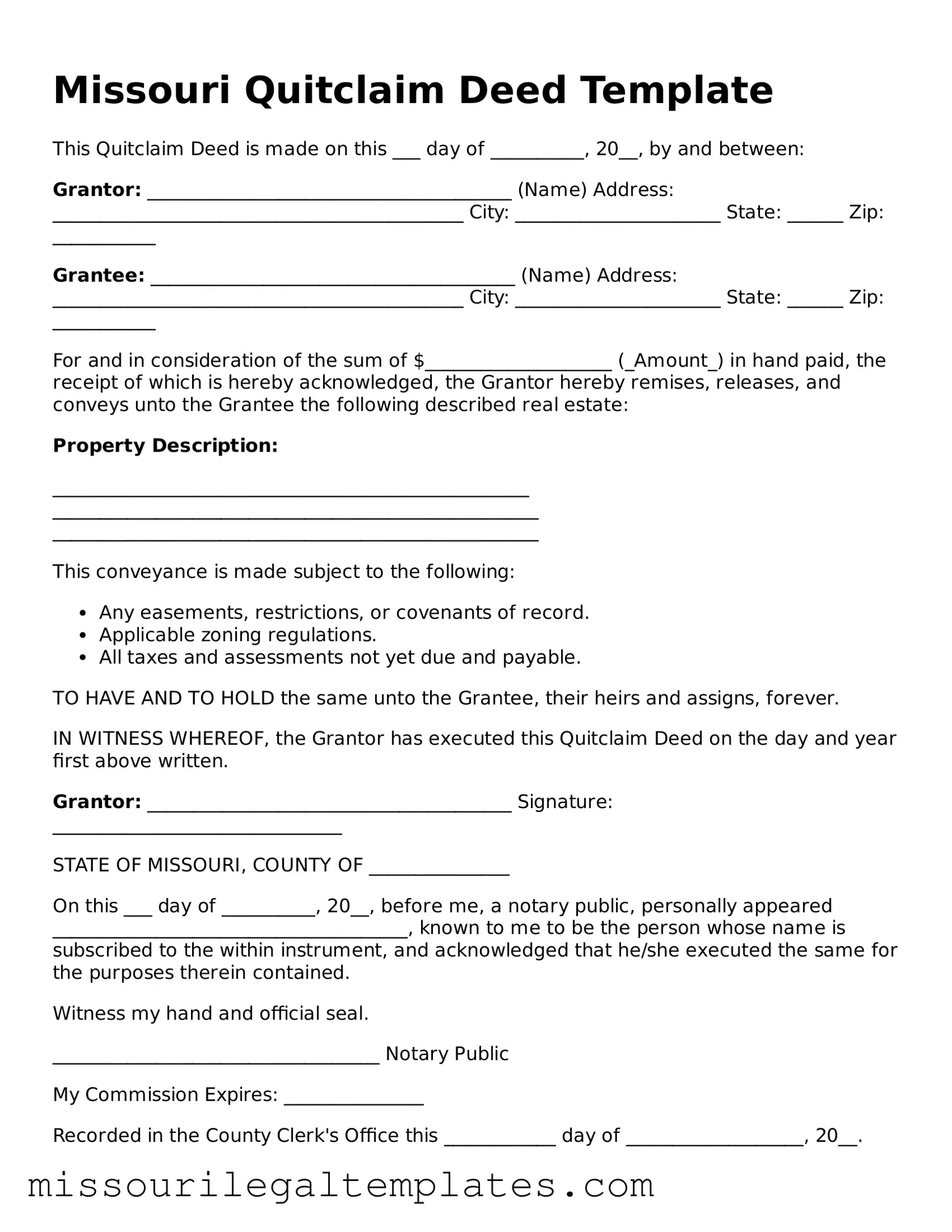Missouri Quitclaim Deed Template
This Quitclaim Deed is made on this ___ day of __________, 20__, by and between:
Grantor: _______________________________________ (Name)
Address: ____________________________________________
City: ______________________ State: ______ Zip: ___________
Grantee: _______________________________________ (Name)
Address: ____________________________________________
City: ______________________ State: ______ Zip: ___________
For and in consideration of the sum of $____________________ (_Amount_) in hand paid, the receipt of which is hereby acknowledged, the Grantor hereby remises, releases, and conveys unto the Grantee the following described real estate:
Property Description:
___________________________________________________
____________________________________________________
____________________________________________________
This conveyance is made subject to the following:
- Any easements, restrictions, or covenants of record.
- Applicable zoning regulations.
- All taxes and assessments not yet due and payable.
TO HAVE AND TO HOLD the same unto the Grantee, their heirs and assigns, forever.
IN WITNESS WHEREOF, the Grantor has executed this Quitclaim Deed on the day and year first above written.
Grantor: _______________________________________
Signature: _______________________________
STATE OF MISSOURI, COUNTY OF _______________
On this ___ day of __________, 20__, before me, a notary public, personally appeared ______________________________________, known to me to be the person whose name is subscribed to the within instrument, and acknowledged that he/she executed the same for the purposes therein contained.
Witness my hand and official seal.
___________________________________
Notary Public
My Commission Expires: _______________
Recorded in the County Clerk's Office this ____________ day of ___________________, 20__.
